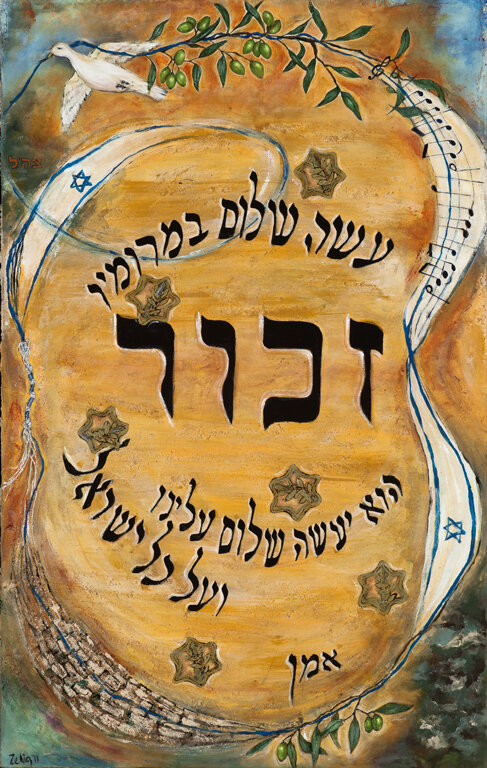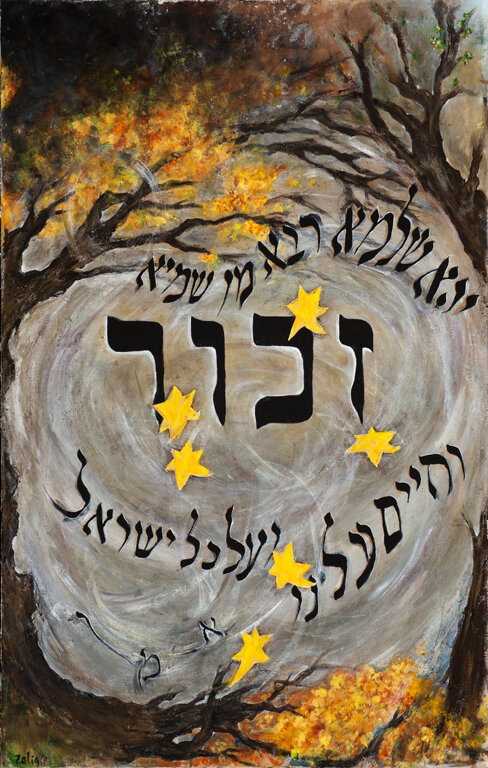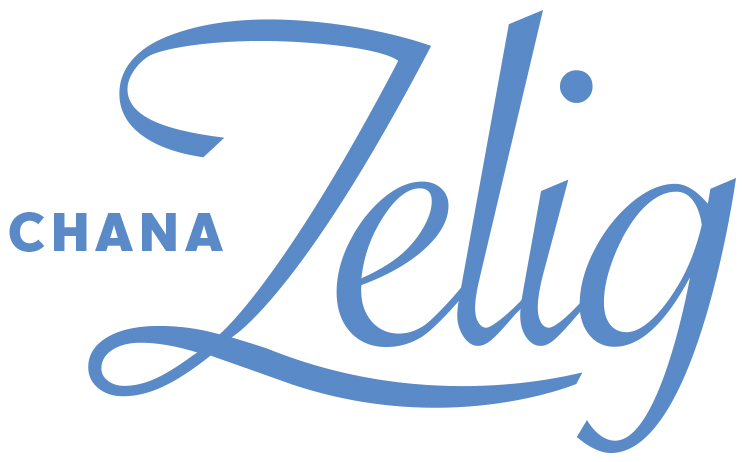Synagogue
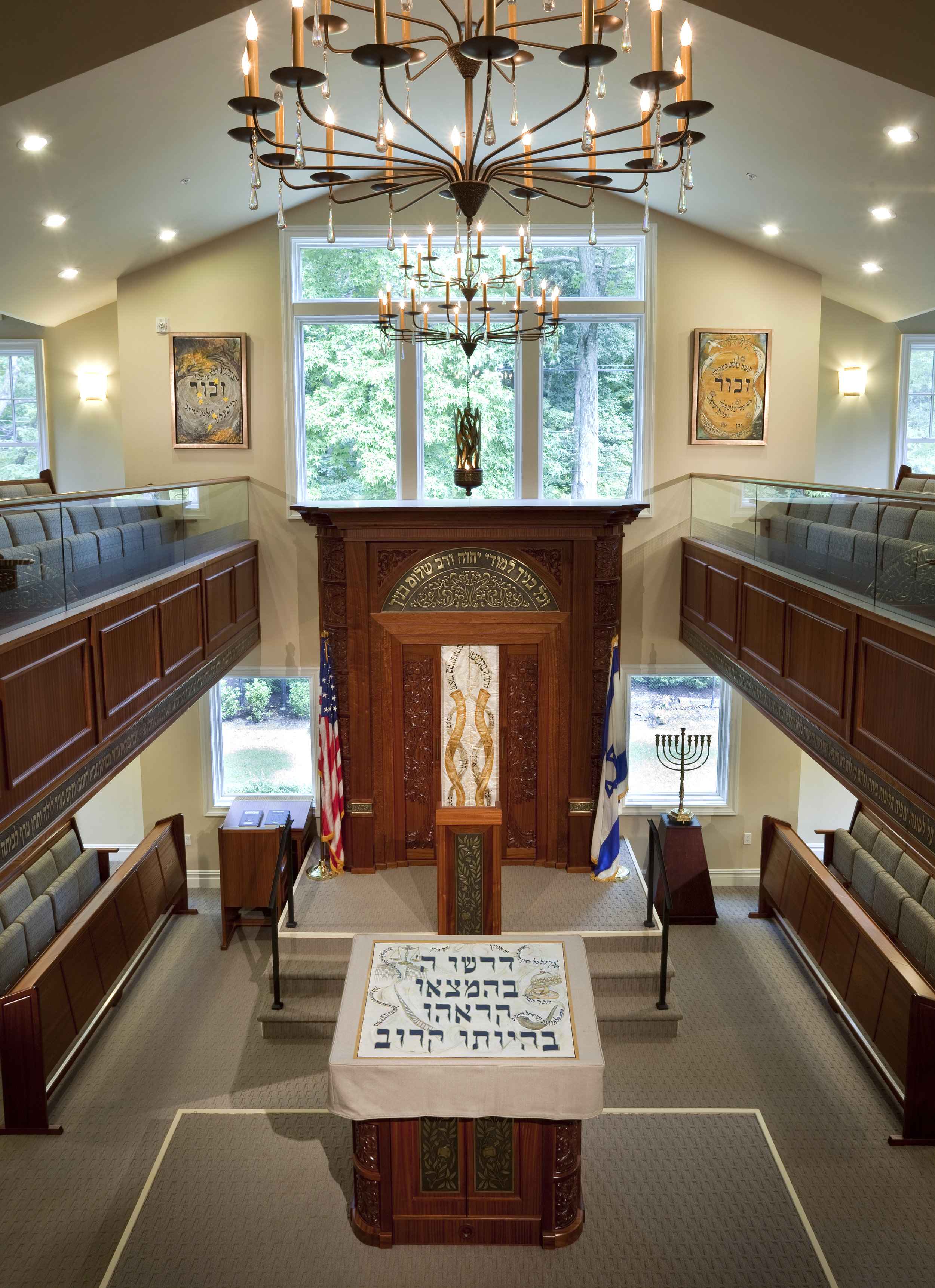
This hand-painted Parochet, ark cover and Bima, podium, were created especially for the period oft High Holidays, or The Days of Awe, a time for contemplation and repentance. Traditionally, these sanctuary pieces are white, to represent purity and holiness. The curtain has two long shofars, with verse chanted during the liturgy: “praise Him upon the earth and in heaven, and raise a him" and, “seek God where He may be found, call upon Him and He is near." The Bima cover contains verses and images representing aspects of the holidays.
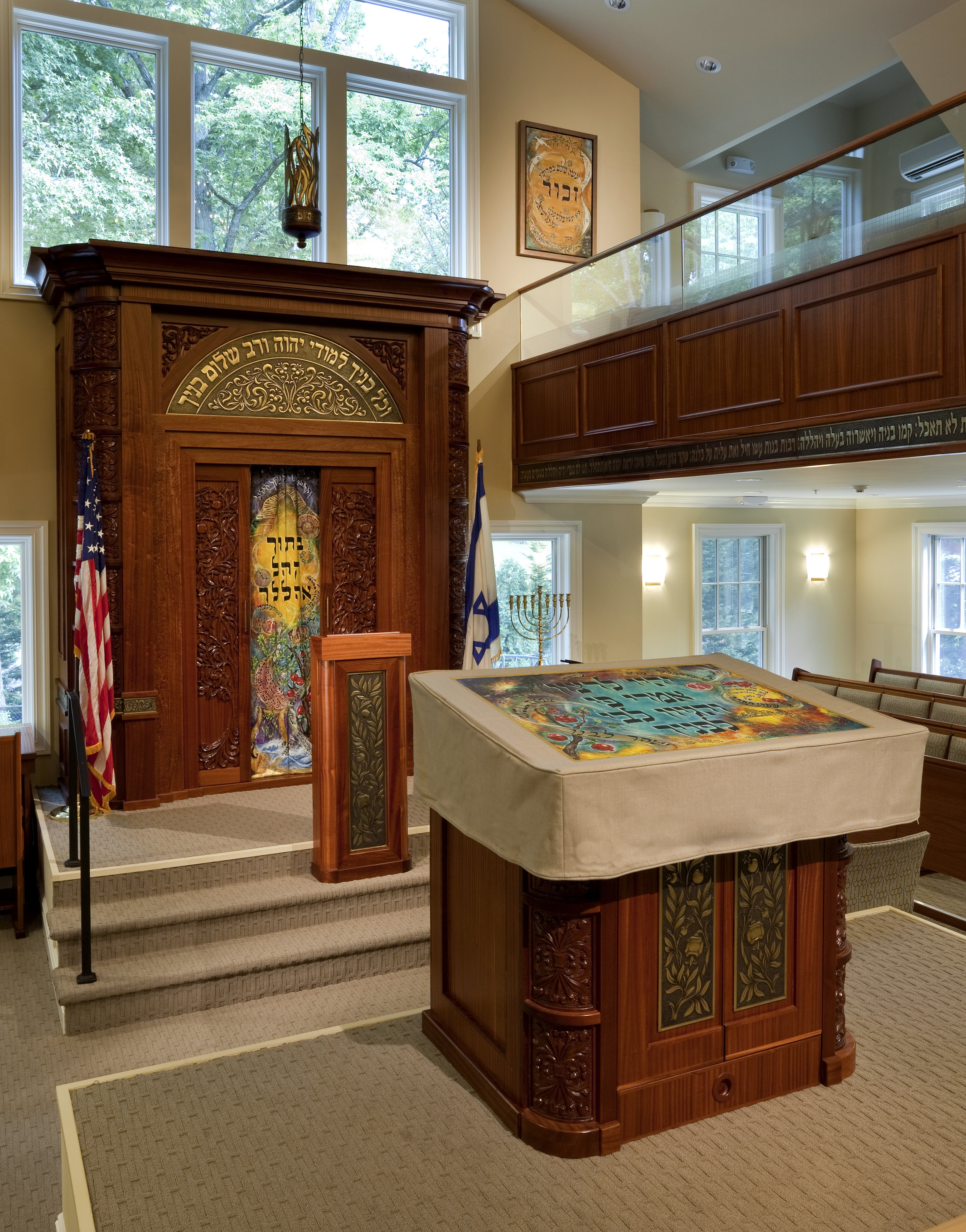
Texts and images on the Bima (podium) explore the human connections among one another and with God, and are vehicles to, kavanah, focus and awareness. It involves two forms of prayer: those that can be communicated in language, and meditations that transcend words. Both categories come together in the central phrase, “May the words of my mouth and the mediations of my heart be pleasing to You.”
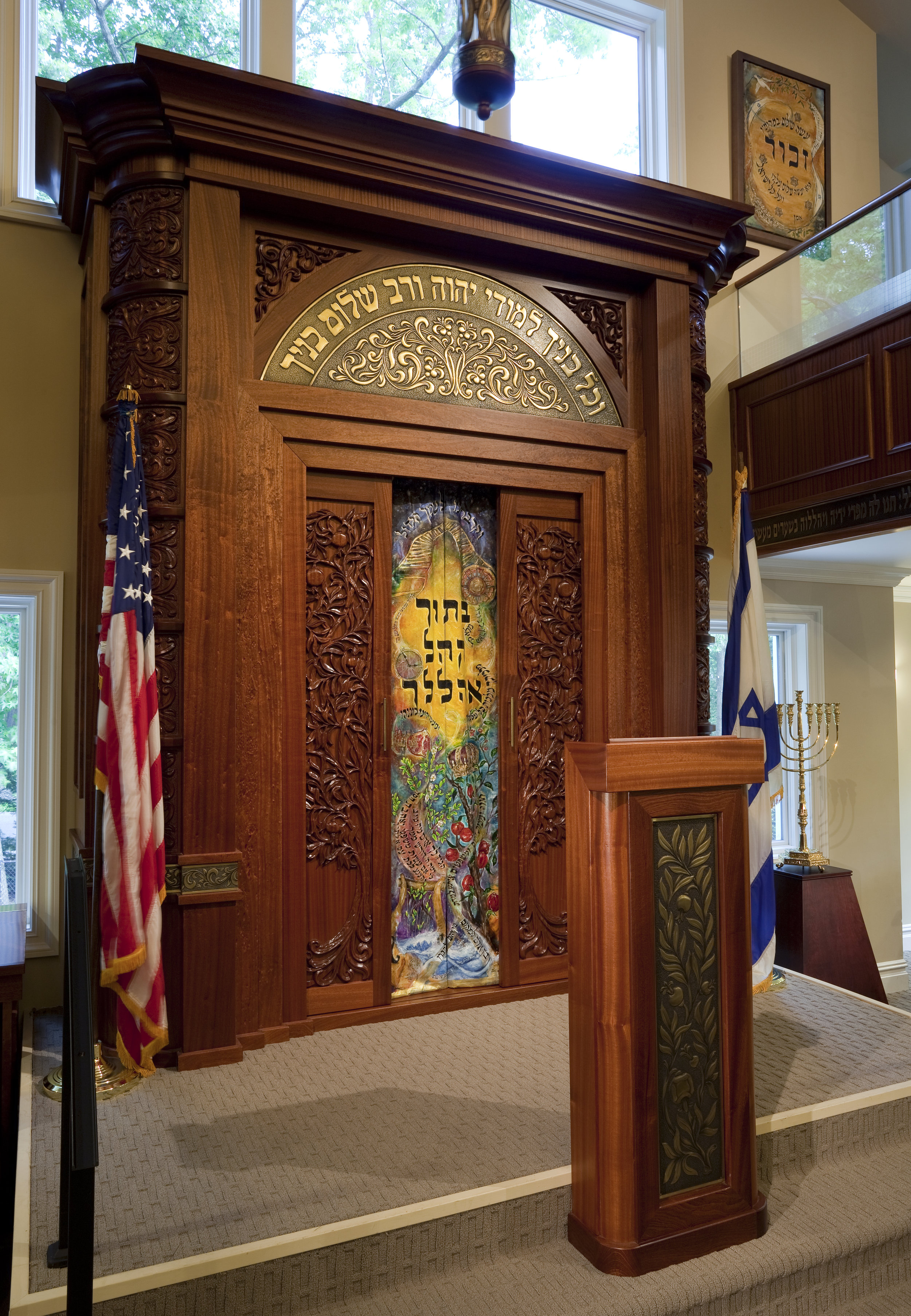
A companion piece to the Bima (podium) cover, this parochet, ark curtain, honors the nature of community and the values and character of the congregation. One half represents the relationship between God and the Jewish people, and the other contains symbols that exemplify this congregation.
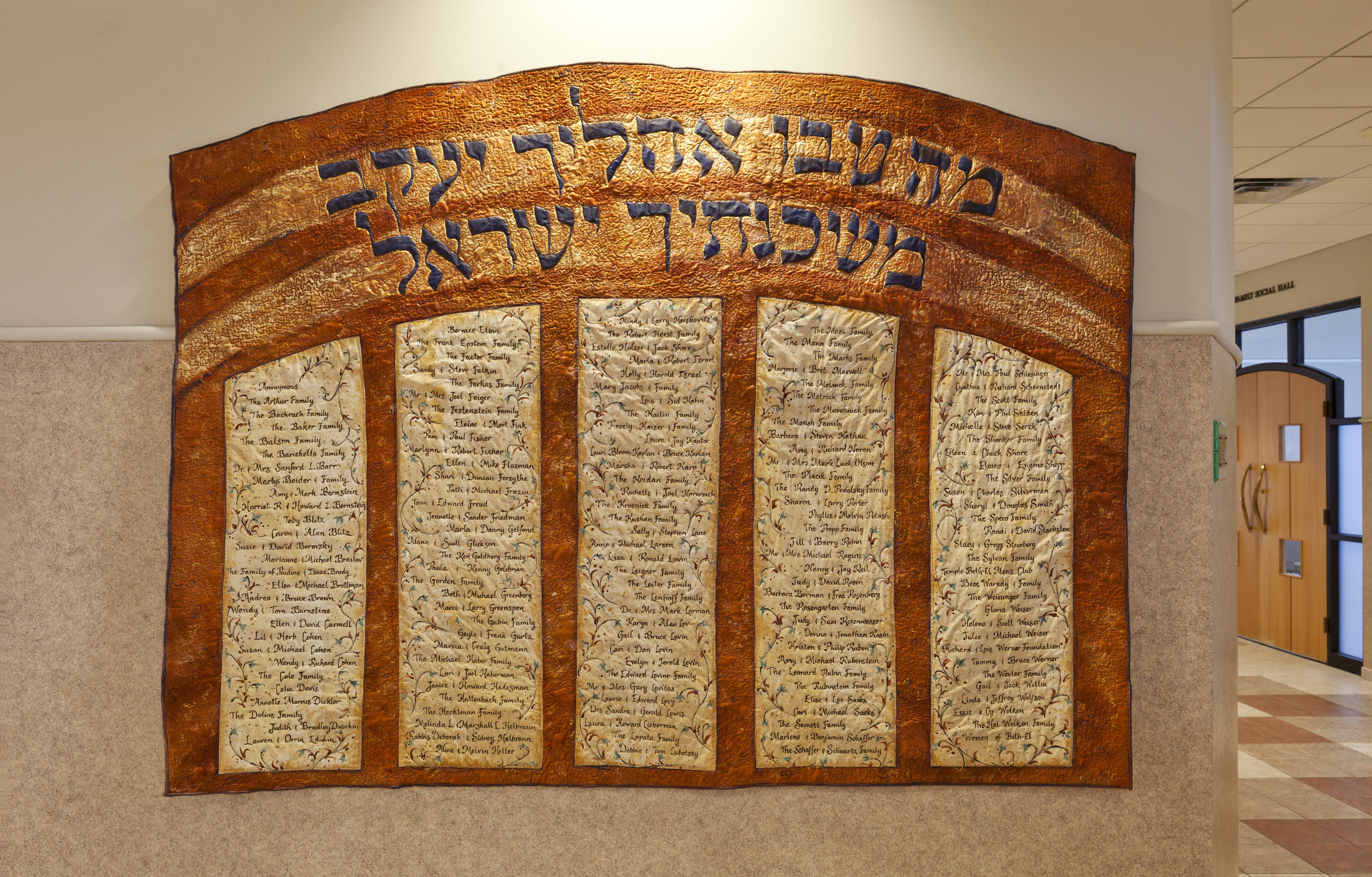
The overarching verse says, "How good are your tents, O Jacob, and your dwellings, O Israel. It is one of many references to the life of Jacob in the synagogue. The fabric links it to the tent motif throughout the building. Donors' names are individually painted and stitched on hand-dyed silk.
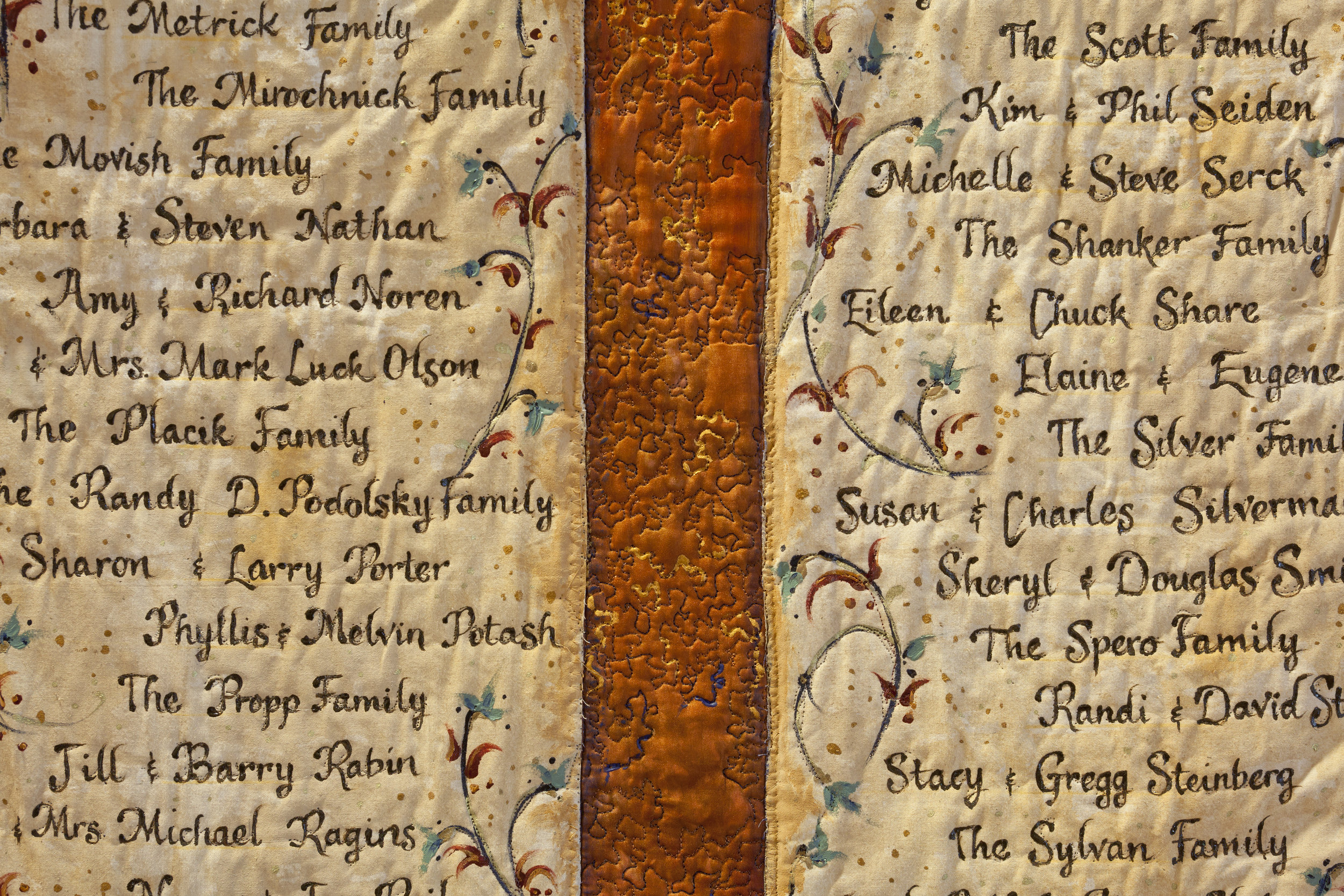
Individual donors' names are painted and stitched onto hand-dyed silk.
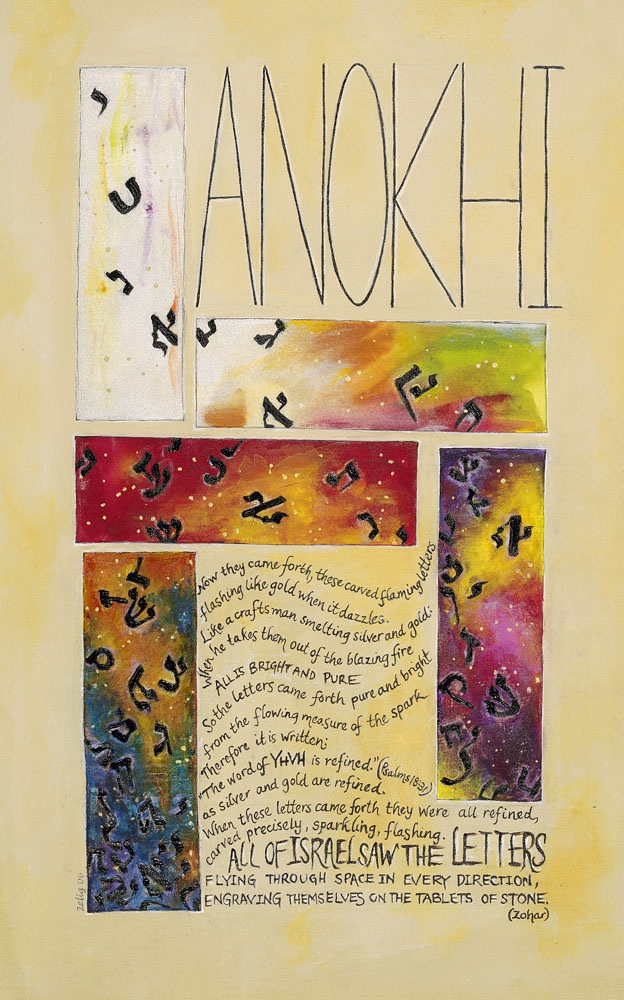
Hebrew characters get less, and the colors less saturated as they ascend. The design is based on an account int the mystical text, The Zohar, here letters and sparks flew at random, until they assembled themselves onto the tablets.
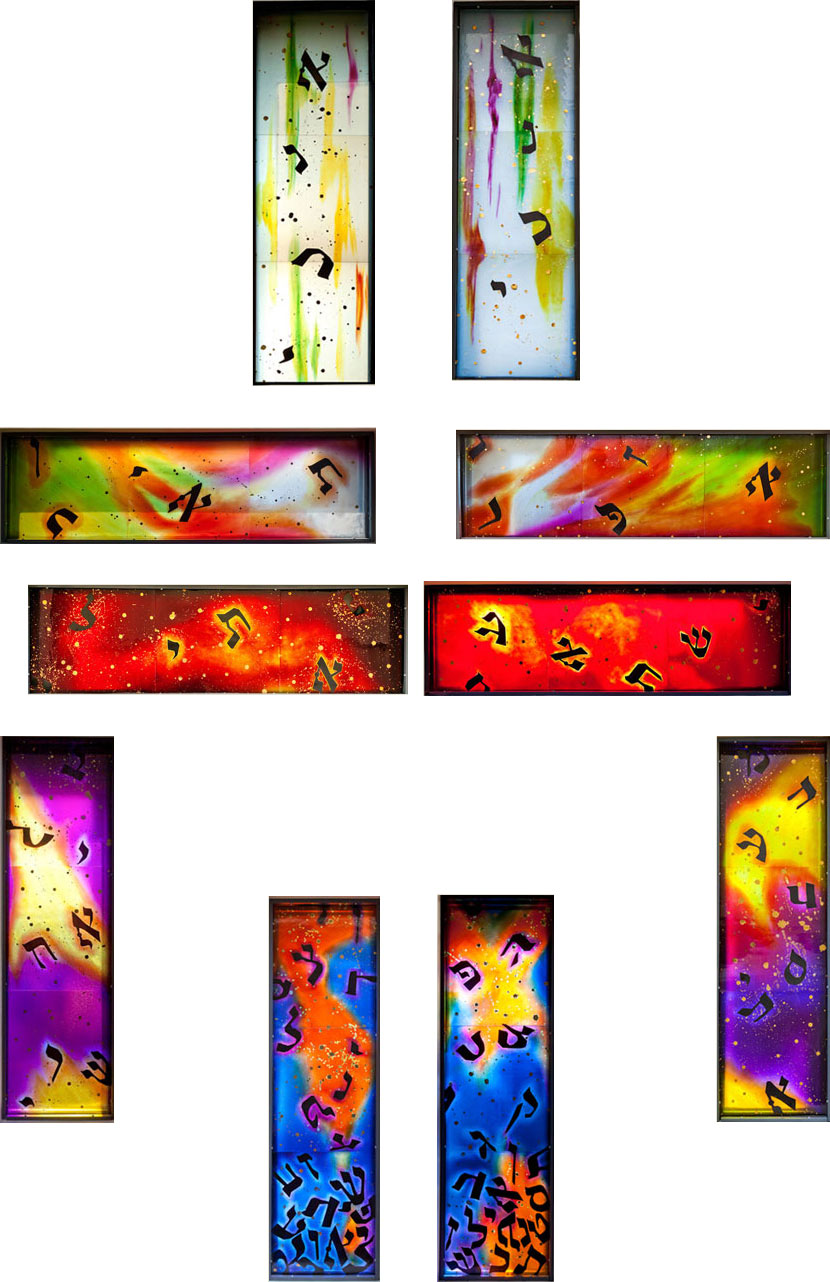
Hebrew characters get less chaotic and dense they ascend, until they spell the first word of the Ten Commandments. The design is based on an account in the mystical text, The Zohar, where letters and sparks flew at random until they assembled themselves onto the tablets.
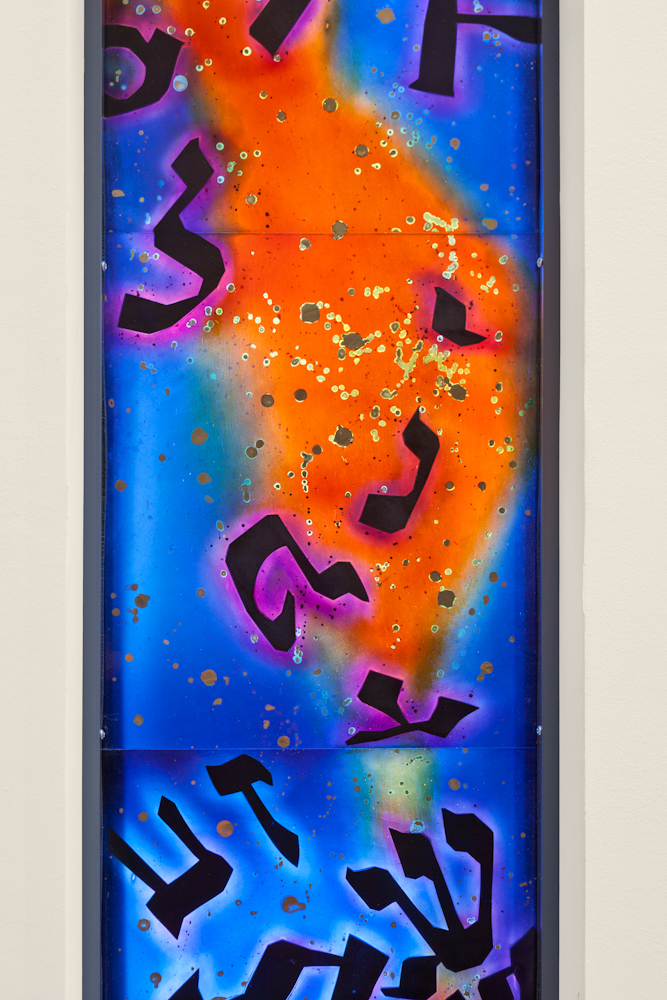
Ten Stained Glass windows based on teachings about The Ten Commandments. Letters and sparks flew everywhere until they assembled themselves onto the tablets. Each window, in different colors, can be seen on its own, or as part of a full composition. Design and concept were fabricated in glass in Germany.
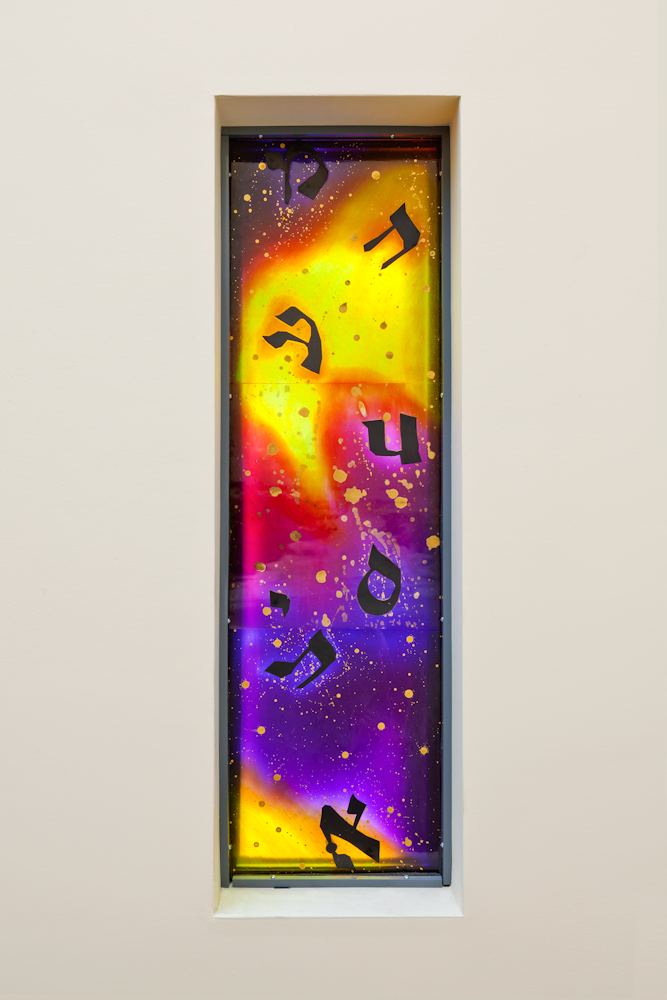
Ten Stained Glass windows based on teachings about The Ten Commandments. Letters and sparks flew everywhere until they assembled themselves onto the tablets. Each window, in different colors, can be seen on its own, or as part of a full composition. Design and concept were fabricated in glass in Germany.
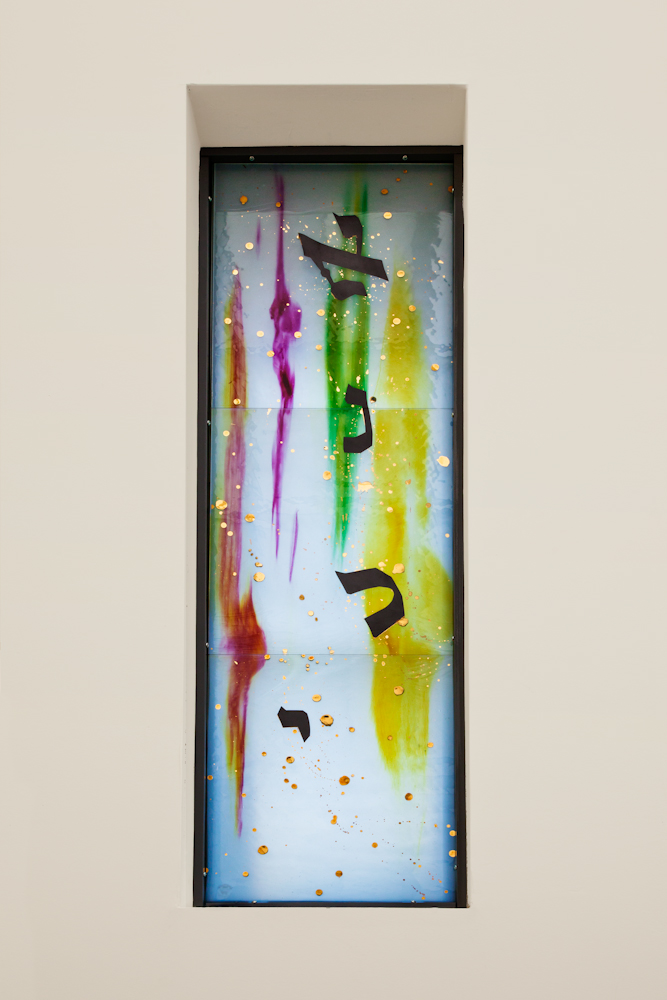
Ten Stained Glass windows based on teachings about The Ten Commandments. Letters and sparks flew everywhere until they assembled themselves onto the tablets. Each window, in different colors, can be seen on its own, or as part of a full composition. Design and concept were fabricated in glass in Germany.
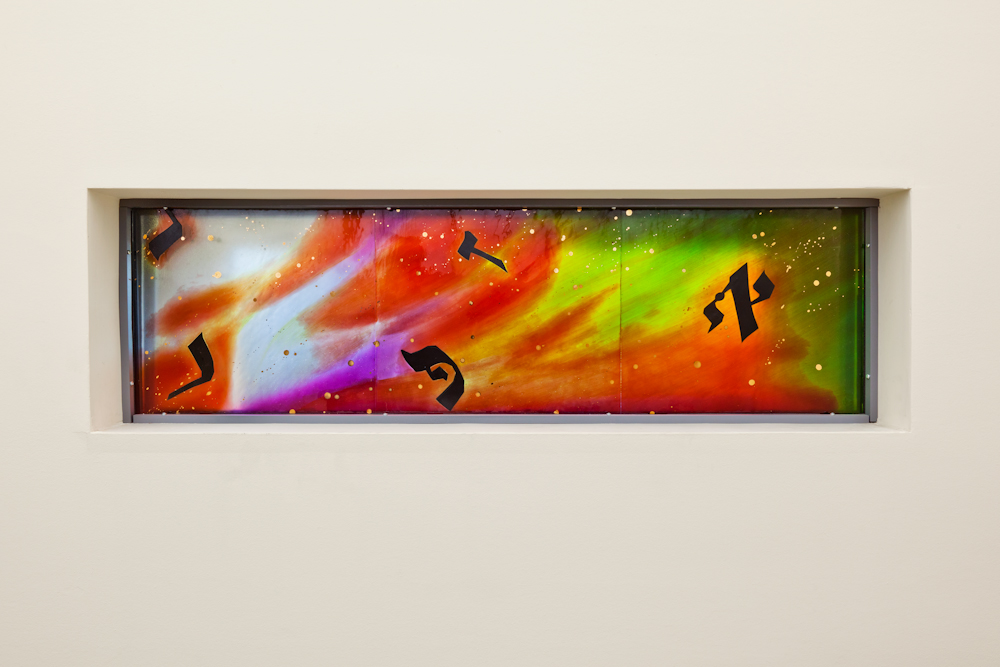
Ten Stained Glass windows based on teachings about The Ten Commandments. Letters and sparks flew everywhere until they assembled themselves onto the tablets. Each window, in different colors, can be seen on its own, or as part of a full composition. Design and concept were fabricated in glass in Germany.
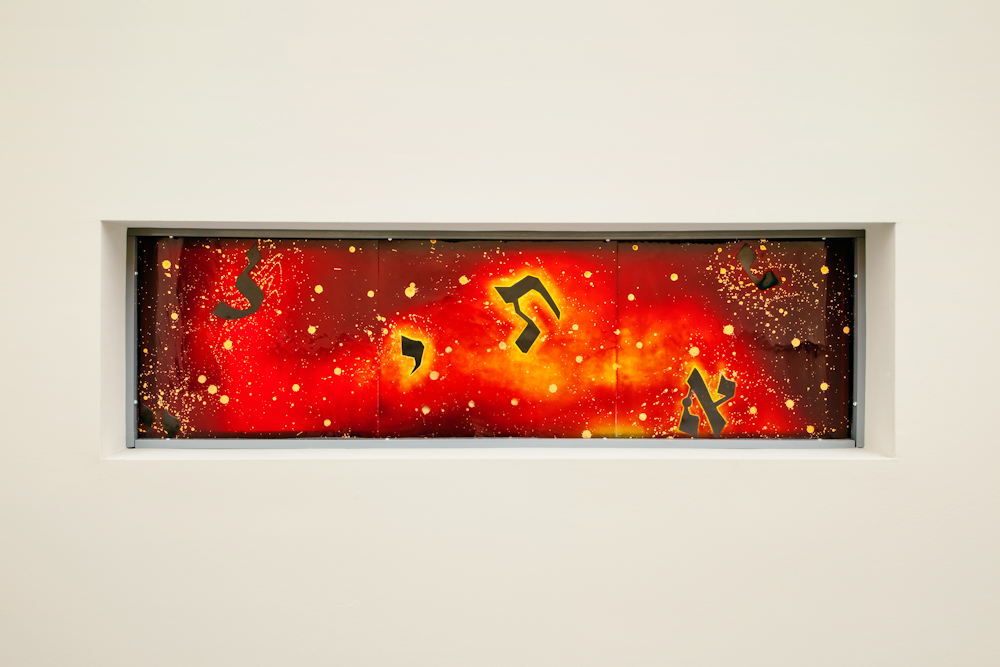
Ten Stained Glass windows based on teachings about The Ten Commandments. Letters and sparks flew everywhere until they assembled themselves onto the tablets. Each window, in different colors, can be seen on its own, or as part of a full composition. Design and concept were fabricated in glass in Germany.
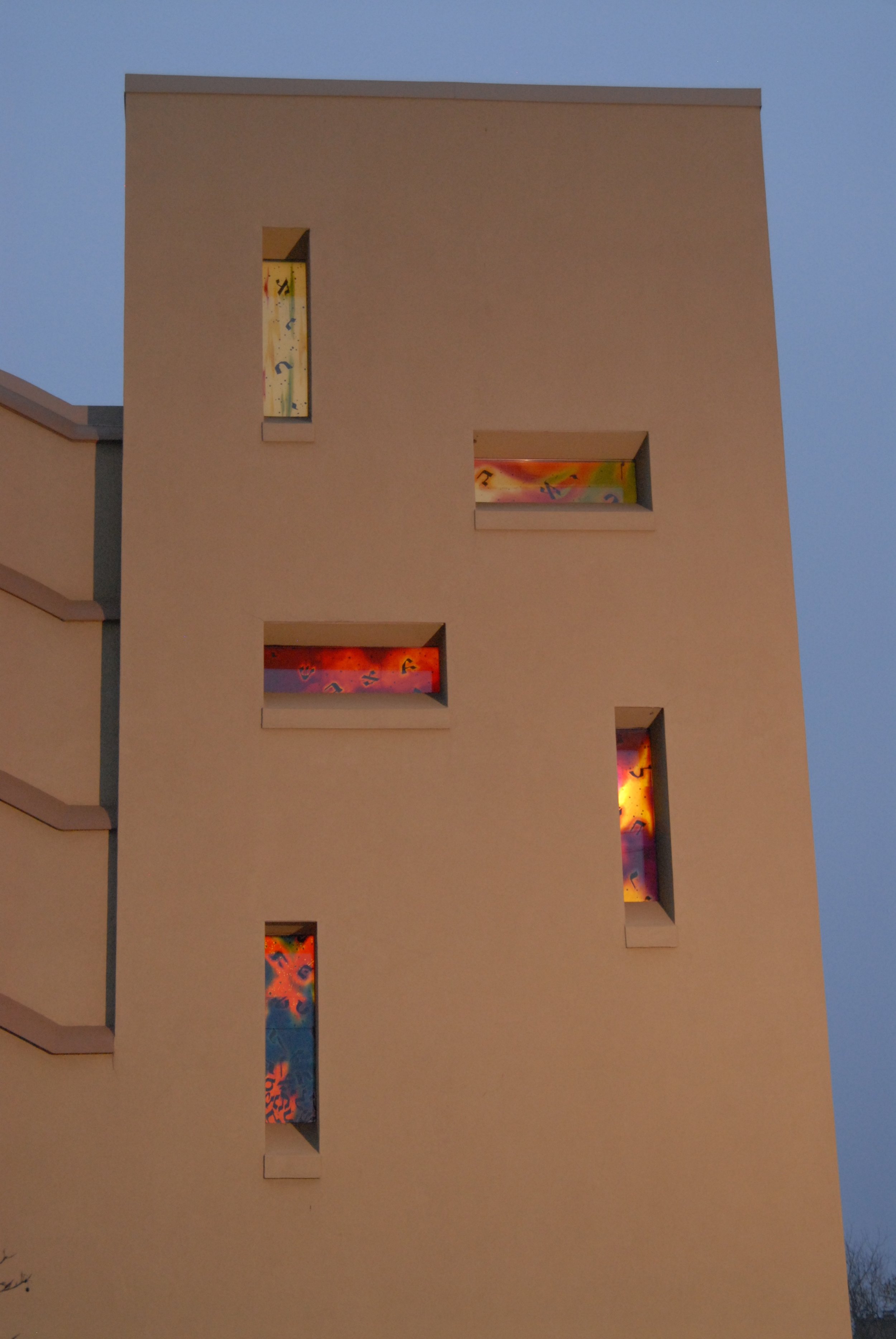
Ten Stained Glass windows based on teachings about The Ten Commandments. Letters and sparks flew everywhere until they assembled themselves onto the tablets. Each window, in different colors, can be seen on its own, or as part of a full composition. Design and concept were fabricated in glass in Germany.
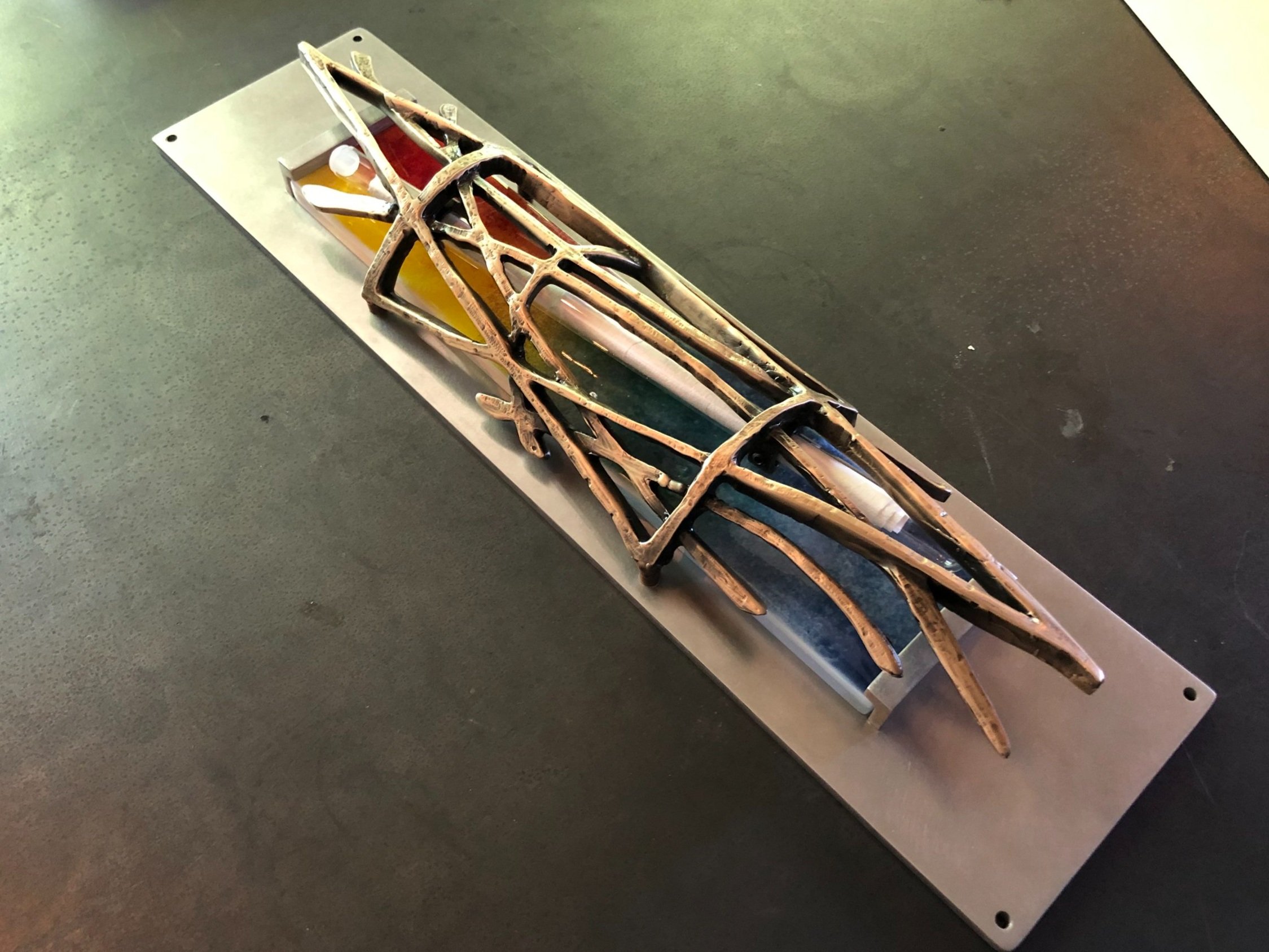
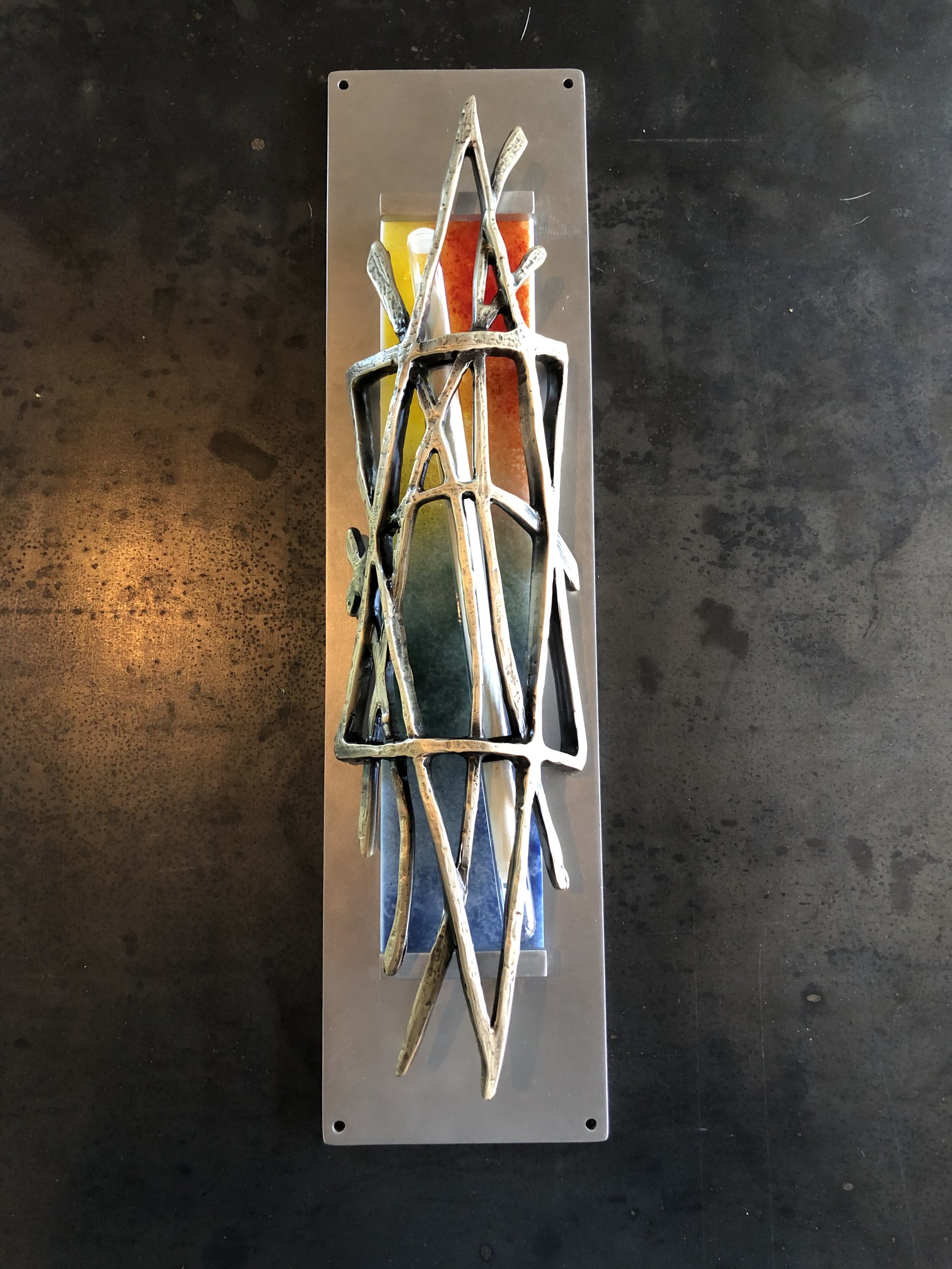
Commission in honor of the dedication of the new lobby in a landmark temple. The bronze and the colors are inspired by the Temple’s logo. The mezuzah scroll inside a tube is connected diagonally, to lean into the space
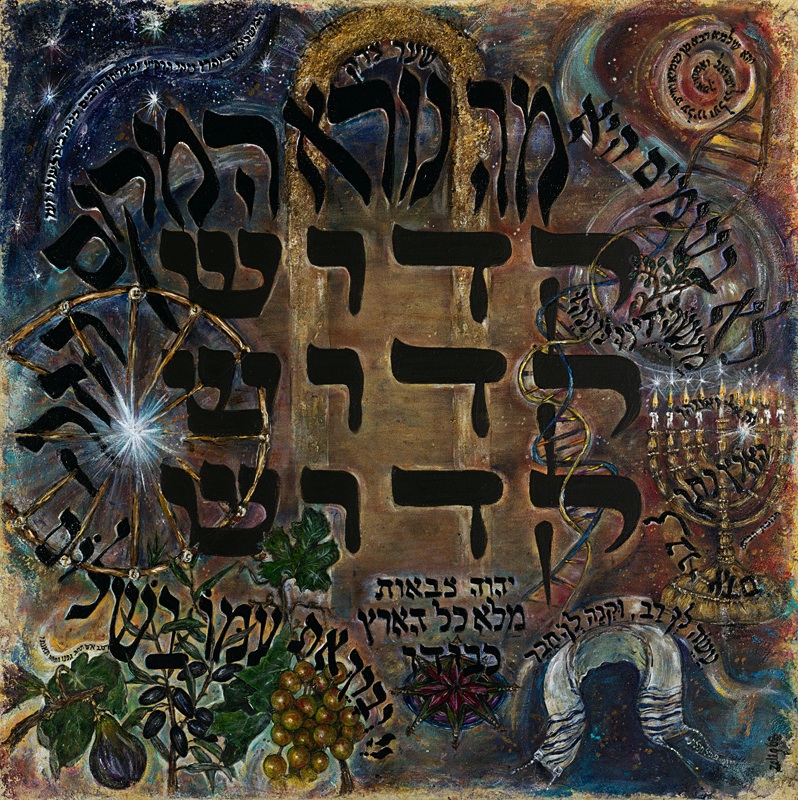
The central text is the Kedushah, “Holy, Holy, Holy is the Lord of hosts. All earth is filled with His glory," demonstrating that holiness in found on earth, in the work of human beings; and divinity rests in shared aspirations, beauty, friendship and peace.
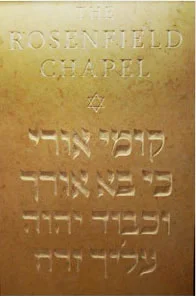
Stone Tablet in entryway to chapel reads
"Arise, shine, for your light has come." Isaiah 60. Original Hebrew calligraphy was fabricated into stone.
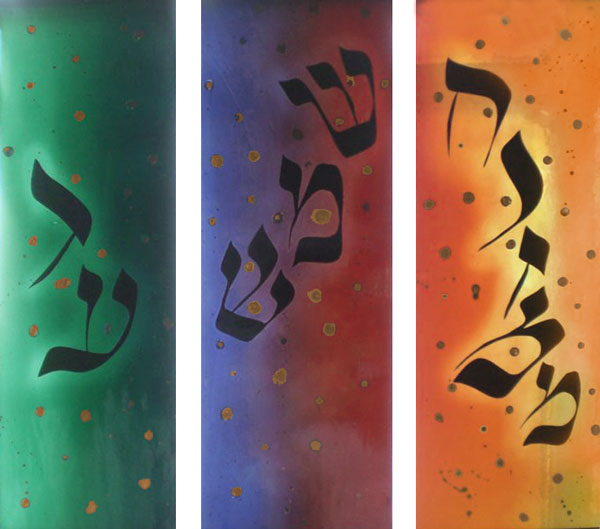
Mouthblown antique glass, acid etching and 24 Karat gold. Fabricated at DerixGlasstudios, Taunnestien, Germany.
Windows in oval shaped chapel reflect cycle of days. Together they spell out "From the sun's rising in the east, to the place where it sets, God's name is praised." Psalms 113:3.
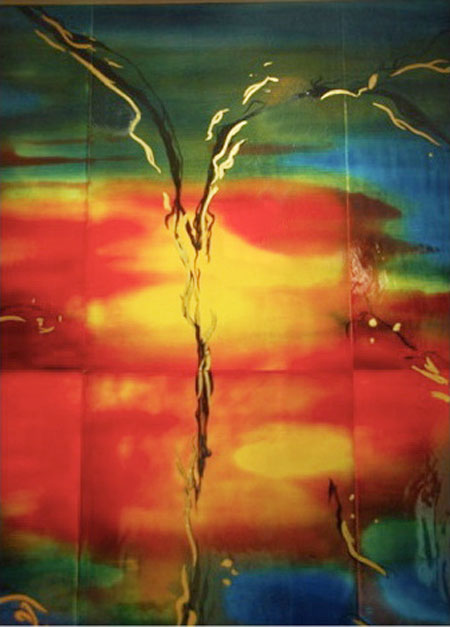
Mouthblown glass, acid etched with 24 Karate gold. Fabricated at Derix Glasstudios, Taunnestein, Germany.
Glass wall partition, visible on both sides, symbolizes of God's directive to Moses to "chisel out two tablets like the first ones." The passage reflects a task of Reform Judaism to continually form contemporary interpretations of Jewish tradition.
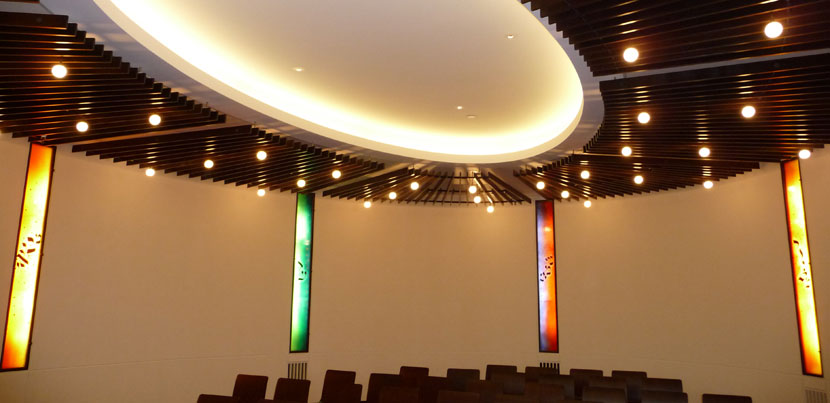
Mouthblown glass windows, acid etched with 24 Karat gold were fabricated at Derix Glasstudios, Taunnestein, Germany.
Together the spell out "From the rising of the sun in the east, to the place where it sets, God's name is praised."
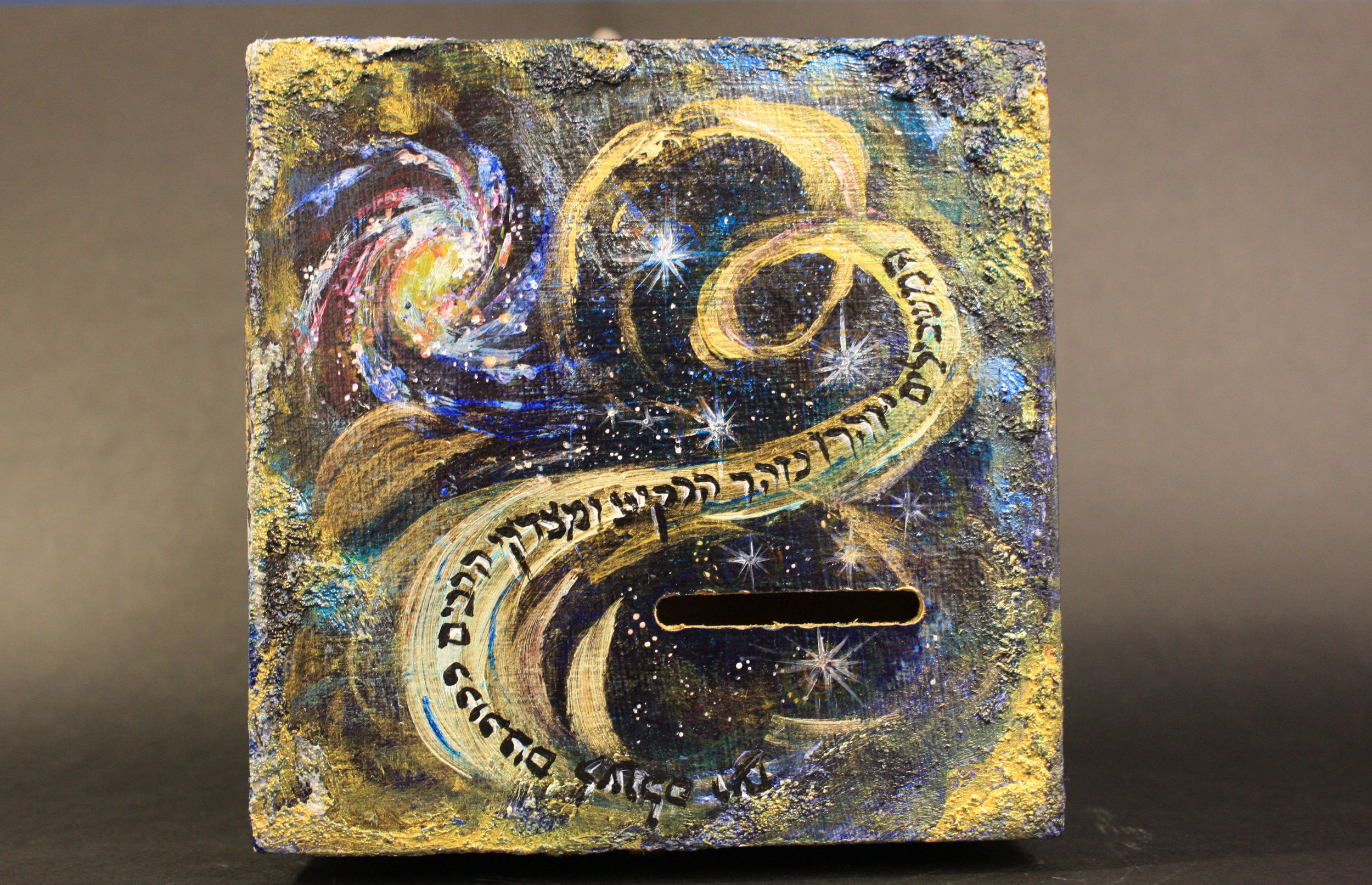
Acrylic on wood. top of 8-inch square, hand-painted tzedaka box, commissioned as a congregant's gift to the synagogue. Each side represents the connections among the Rabbi, a Bar Mitzvah and congregation.
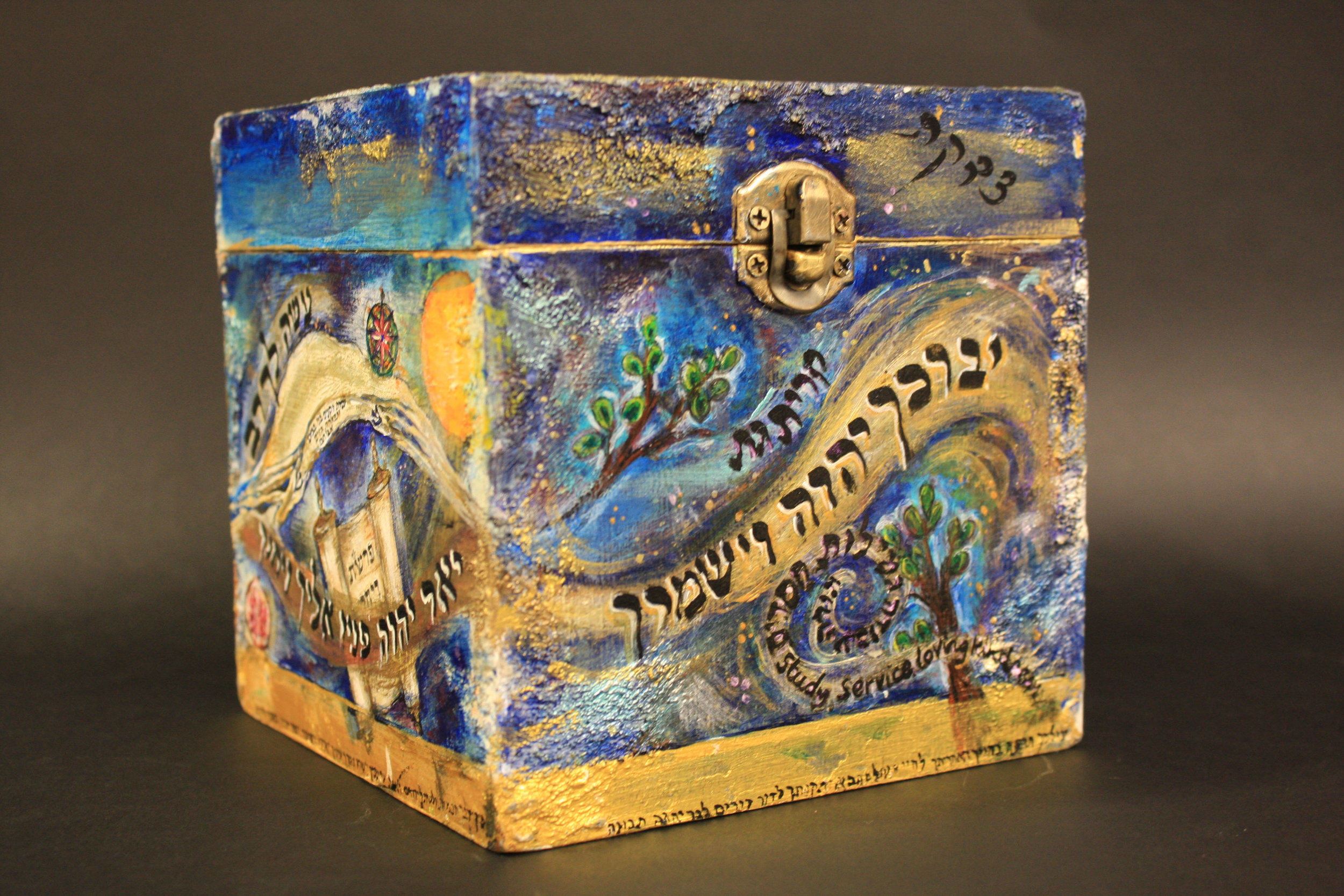
Acrylic on wood. 2 of 5 sides of 8-inch square, hand-painted tzedaka box. It was commissioned as a congregant's gift to the synagogue. Each side represents the connections among the Rabbi, the Bar Mitzvah and congregation.
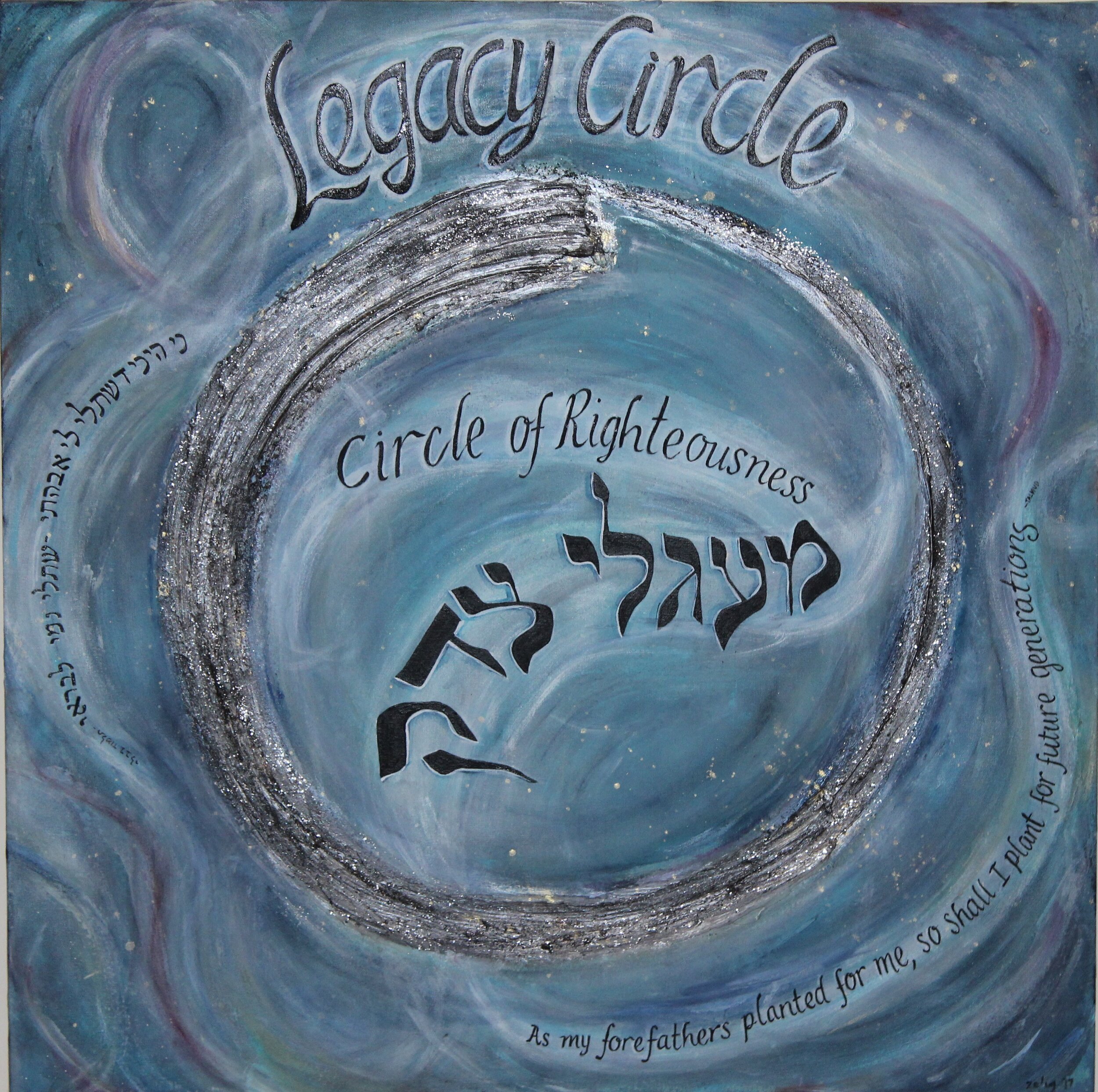
To honor the Legacy Circle donors to the Temple, the central term, Magalai Tzedek, Circle of Righteousness is contained within an allusion to the pre-Talmudic scholar, Honi Ha’magel (Honi the Circle Drawer.) Honi drew a circle in the d
